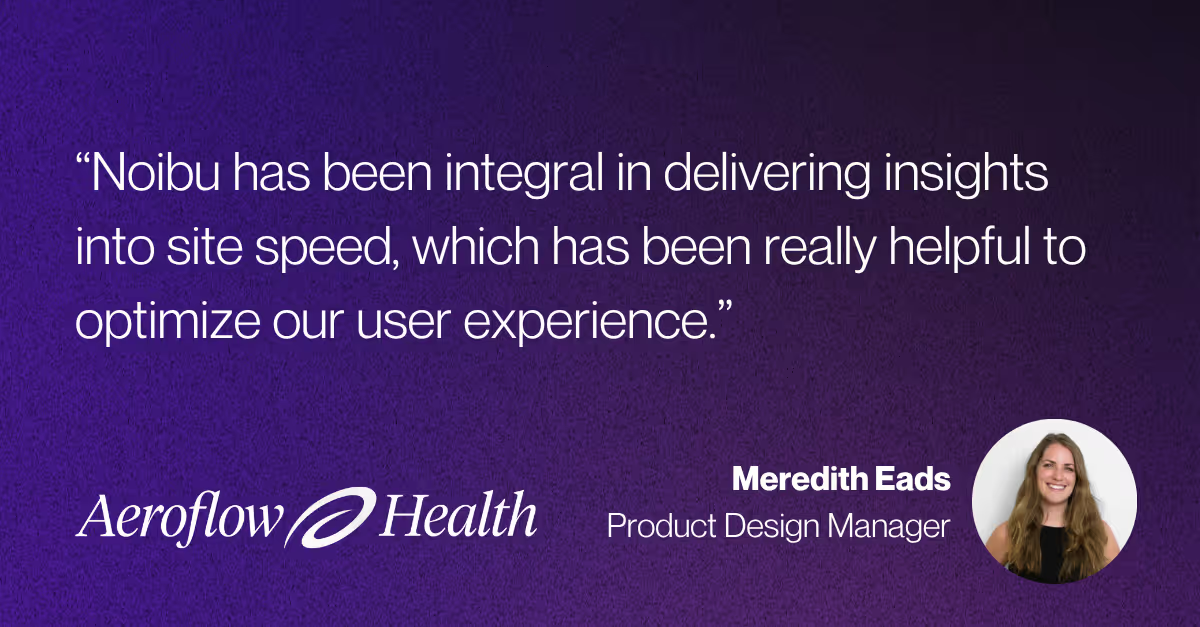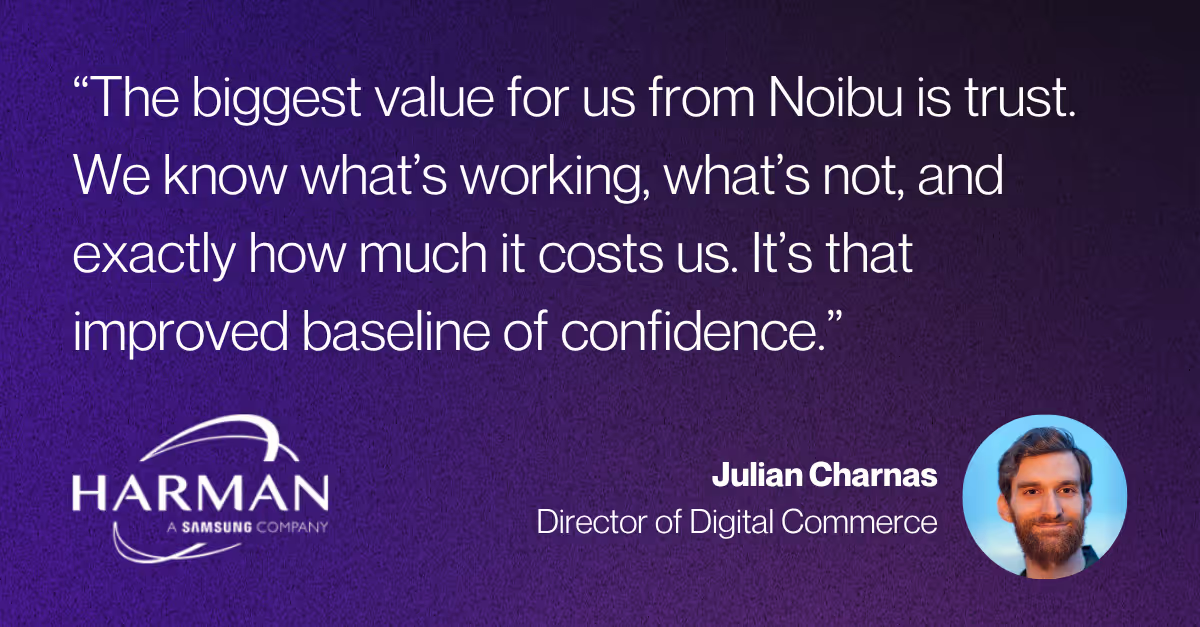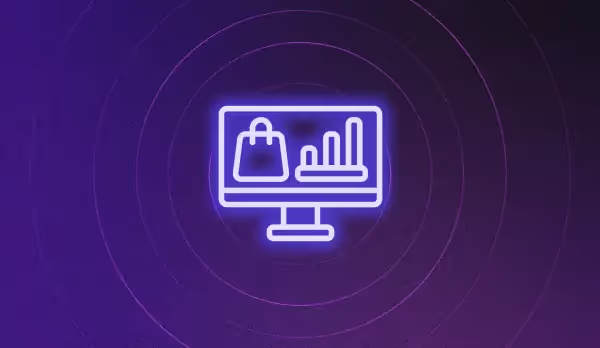The hidden cost of silent ecommerce friction
.avif)
The new growth frontier: conversion health
For ecommerce leaders, 2025 is the year of smarter growth.
Traffic is expensive, privacy rules have reshaped targeting, and customer acquisition costs are higher than ever.
Every executive is asking the same question:
“How do we grow revenue without spending more?”
The answer lies in what’s already there: your existing traffic.
Across the average ecommerce site, 3–5% of sessions fail silently. Pages load too slowly. Buttons stop working. UX friction frustrates shoppers. None of it triggers an alert — but it silently erodes conversion and customer trust.
Traditional analytics can’t see these moments.
But Noibu can.
Noibu turns hidden technical, performance, and UX issues into conversion opportunities — surfacing the exact blockers that cost revenue and giving teams a clear path to fix what matters most.
What silent friction really costs
Behind every drop in conversion is a customer who tried to buy — and couldn’t.
- A “Pay Now” button that fails only on Safari.
- A cart page that takes 5 seconds longer to load on mobile.
- A form field that shifts just enough to cause rage clicks.
These issues don’t appear in analytics reports. They don’t break the site — they just break the experience.
Rui Kojima, Senior Director of Ecommerce at Aetrex, captured it best:
“Noibu has transformed our business. When customers have issues, we can immediately see whether it’s a usability or development problem. That barrier between customer feedback and root cause is gone.”
Multiply that by thousands of sessions, and you get what Noibu calls the conversion opportunity delta — the measurable gap between potential and realized revenue.
From error monitoring to conversion opportunity intelligence
Ecommerce monitoring used to mean reactive triage: wait for an error, investigate, fix.
In 2025, that’s not enough.
Noibu’s platform unifies every conversion-impacting factor into one system of intelligence:
1. Errors
JavaScript crashes, broken APIs, third-party conflicts — all prioritized by revenue impact, not noise.
“Before Noibu, we were spending hours replicating issues. The platform’s actionable insights save critical development time.”
— Carrie McMahon, Ecommerce Product Manager, Alice + Olivia
2. Performance
Speed is revenue. Noibu’s performance monitoring highlights where latency and load times directly affect conversion, enabling teams to quantify exactly how milliseconds translate to dollars.
“Noibu has been integral in delivering insights into site speed, which has been really helpful to optimize our user experience.”
— Meredith Eads, Product Design Manager, Aeroflow Health

3. UX friction
Not every issue is technical. Noibu’s session replays, heat maps, and scroll analysis reveal where real users hesitate, abandon, or struggle — surfacing UX friction invisible to analytics.
“Noibu has helped us identify UX issues by showing real user sessions and behaviours. We can see pain points in real life, not just in data.”
— Meredith Eads, Aeroflow Health
Together, these capabilities form Noibu’s conversion opportunity intelligence — a holistic view of every technical, performance, and UX element that influences your revenue.
Intelligence that drives action
Noibu doesn’t just detect issues; it helps teams act fast.
- Uncover – Automated scanning identifies new issues instantly.
- Quantify – AI models estimate lost revenue per issue, aligning engineering and business priorities.
- Prioritize – Focus on the few issues with the biggest financial impact.
- Resolve – Developers use session replays and technical logs to fix quickly.
- Verify – Noibu automatically confirms resolution and revenue recovery.
The result is a continuous optimization loop — what leading retailers call conversion observability.
“Before Noibu, we were shining a flashlight, hoping to spot issues in the dark. Noibu turned the lights on. We can see the entire room, not just the corners.”
— Yoav Shargil, Chief Digital Officer, David’s Bridal
The business case for conversion visibility
Across hundreds of Noibu customers, retailers recover an average of $500K–$2M in annual revenue by resolving the issues that previously went unnoticed.
Even more revealing: over 60% of lost conversions come from non-critical issues — performance bottlenecks and UX friction that never trigger traditional alerts.
“It’s really easy to prioritize technical issues because we know what our customers are experiencing. Noibu helps us focus on what truly impacts the ecommerce experience.”
— Will Fox, Senior Manager of Web Operations, Big Ass Fans
This shift — from technical noise to business clarity — is what sets Noibu apart from analytics, APM, or generic monitoring tools.

“We use Noibu to uncover errors that could otherwise go unnoticed for weeks or even forever.”
— Joe Bona, Senior Software Engineer, Barstool Sports
Built for modern ecommerce teams
Noibu doesn’t just serve developers — it aligns engineering, product, UX, and revenue teams under one view of site health.
- Developers get detailed console data, stack traces, and log integration.
- Product owners see quantified business impact.
- UX teams view real sessions and user journeys.
- Executives see performance through a revenue lens.
“The biggest value for us from Noibu is trust. We know what’s working, what’s not, and exactly how much it costs us. It’s that improved baseline of confidence.”
— Julian Charnas, Director of Digital Commerce, Harman Inc.

The executive imperative: protect every conversion
Today’s ecommerce leaders can’t afford to fly blind.
It’s not just about site uptime — it’s about conversion health.
That means:
- Detecting and preventing blockers before customers notice.
- Quantifying financial impact to guide priorities.
- Collaborating across teams with shared data and language.
“Noibu gave us a new lens on our website. We stopped chasing random bugs and started prioritizing what actually cost us money.”
— VP of Ecommerce, Global Apparel Brand
Noibu transforms reactive monitoring into proactive conversion management — where every fix drives measurable ROI.
The conversion health advantage
The most successful ecommerce brands share one mindset:
Every invisible friction is a conversion opportunity waiting to be unlocked.
Noibu enables teams to identify, quantify, and act on those opportunities — uniting technical precision with business strategy.
Because growth doesn’t just come from more visitors.
It comes from more successful experiences.



